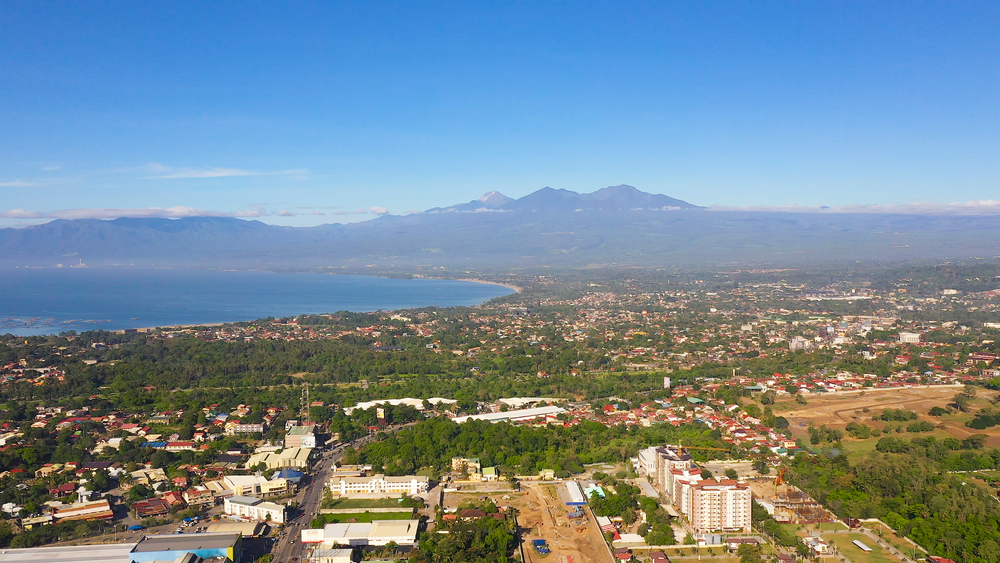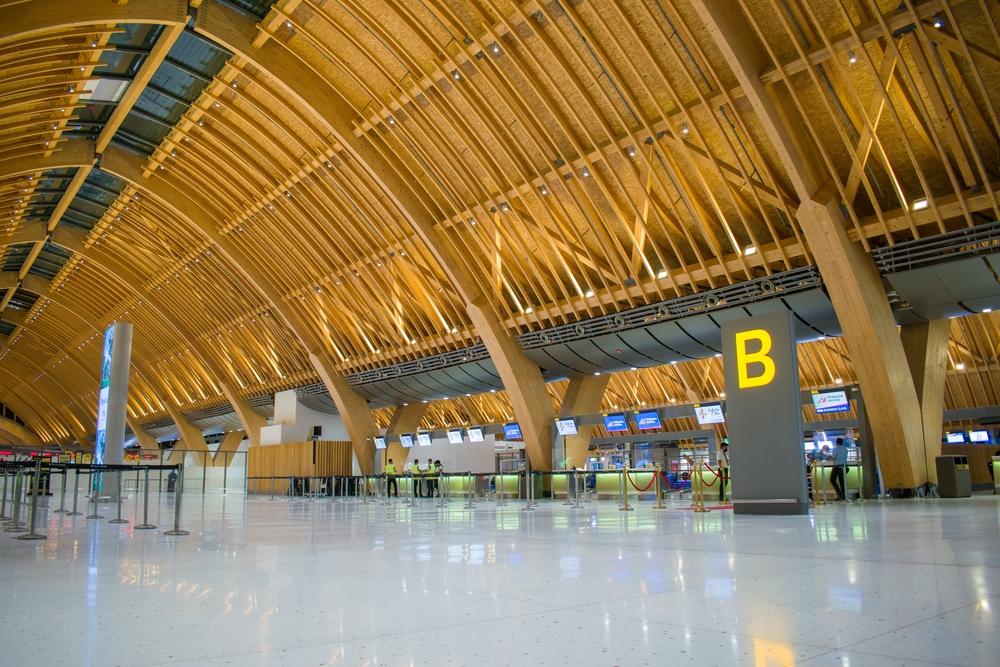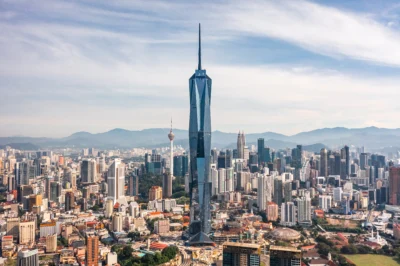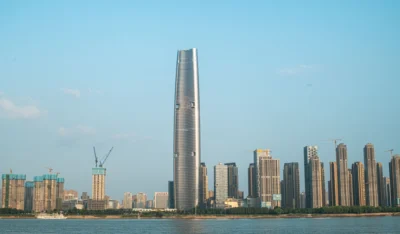The post-pandemic Philippine housing situation: ‘Golden Age’ or ‘Sick Man of Asia’?
Strong GDP growth and healthy condominium sales may paint a rosy picture, but external factors spell clouds on the horizon for the property sector in the Philippines

85 percent of pre-pandemic levels by the fourth quarter of 2022. JosephOropel/Shutterstock
Ferdinand Marcos Jr. will try “very, very hard” to house poor Filipinos during his presidency.
In November, the son and namesake of the former dictator vowed to build 1 million low-cost, socialised homes for every year of his term.
The ambitious housing program could be the definitive answer to the Philippines’ chronic housing backlog, set to balloon to 11 million units by 2028.
Or it may end up being one in a long line of myths shrouding the Marcoses, a political dynasty that once owned towers and mansions from Manhattan to Manila.
Today, the younger Marcos’ capacity for mythmaking faces a hydra of obstacles, from the vestiges of a pandemic to an impending global downturn.
Kept afloat by the explosion of pent-up demand due to eased Covid-19 restrictions, the Philippine economy left 2022 with one of the highest GDP growth rates among Southeast Asian economies.
But The World Bank projects that growth to decelerate from 2023 through 2025 as an unfavourable external environment bites, characterised by high inflation and interest rate hikes.
The residential real estate market is self-correcting in response. Condominium prices have been trending upwards on the back of extended downpayment terms, stretching from the usual two years to as long as five years. Metro Manila alone saw condominium sales regain 85 percent of pre-pandemic levels by the fourth quarter of 2022, according to data from Leechiu Property Consultants.
“We have seen the drop in supply and demand during the initial pandemic years, the residential rental market having been heavily impacted by the exit of a large number of POGO (Philippine Offshore Gaming Operators) impacting the residential rental market,” says Roy Golez Jr., director for research at Leechiu Property Consultants. “Now new reservation sales have been boosted by developers’ extended payment terms, which lowered buyer monthly amortisations and allowed more buyers to participate.”
As consumers bristled at eyewatering vegetable prices, investors saw condominium values in Metro Manila post growth rates of one to eight percent annually while those in Metro Cebu and Davao grew three to five percent
But developers may see these reservation sales as “soft numbers” due to the possibly growing backout rate. Many companies have committed to clearing inventory instead, with only 10,009 condo units launched in Metro Manila in 2022, down 61 percent from 2021. While this has prevented a glut, this has left only 16 months’ worth of supply for the metropolis as of December.
“These buyers are not as solid, are not as strong, are not as committed compared to before when the buyers had more skin in the game due to previously higher downpayments,” says Golez.
“A lot of these buyers find out that they may not be able to afford the unit as soon as it’s finally turned over to them. The economy is still not yet up to pre-pandemic level.”
The pullbacks among this set may grow if interest rate hikes continue apace. The central bank in December raised its benchmark rate to 5.5 percent, the highest level since 2009, as the inflation rate soared to 8.1 percent, the highest since 2008. The bank’s Residential Real Estate Price Index (RREPI) ascended by 6.5 percent year-on-year in the third quarter of 2022 due to price rises of duplex houses, condominium units, and single detached homes.
“We haven’t seen much of a crash in the residential property cycle, and we may see some depressed prices with interest rates peaking over the next six to 12 months,” predicts Michael McCullough, managing director of KMC Savills.
In such a high-inflation environment, real estate promptly behaved like a natural hedge. As consumers bristled at eyewatering vegetable prices, investors saw condominium values in Metro Manila post growth rates of one to eight percent annually while those in Metro Cebu and Davao grew three to five percent. Buyers who had taken advantage of the long low downpayment periods were able to lock in the unit prices and participate in the capital growth.
“The only issue that you may have around inflation is that certain things will cost more, such as your electricity bill may have doubled, as well as food prices,” says McCullough. “But in terms of property investment? It should have no effect.”
For the last three years, high-end to luxury condominiums or those selling from PHP12 million (USD216,000) have consistently performed well, according to Leechiu. Higher segment residential assets in Manila, Cebu and Davao, especially those situated within their CBDs, recorded stable price increases as high-net-worth buyers purchased in bulk, reports KMC Savills.
“Prices of both condo and H&L (house-and-lot) units outside Metro Manila appreciated quite fast as property seekers sought wider spaces and work-from-home remained ascendant,” says McCullough. “The lockdowns were a little heavy-handed and hurt vertical living, particularly within CBDs. It caused people to look for H&L units so they can be the master or the king of their own castles, and that has really accelerated the housing markets outside of Metro Manila.”
Uncertainty continues to undermine the secondary market, with property seekers lacking the wherewithal to afford full cash payment of the total contract prices. “Due to the pandemic, we may see ‘firesale’ or ‘desperation’ sale of unit owners,” says Golez. “But because most of these units have already gained good capital appreciation, these sellers and renters may not even be below acquisition cost.”
On the leasing side, condominium units in the CBDs have started to show signs of recovery.
“The recovery in the residential leasing market will be driven by local employees starting to work onsite and the gradual return of expatriates,” says Richard Raymundo, managing director of Colliers Philippines. “Residential demand should also be supported by an increase in office leasing and an improvement in general business confidence. The return of traffic to pre-Covid levels should also urge employees to rent a condominium unit or co-living facility near their offices.”
Marcos may yet free up more cash for consumers to allocate in real estate investments by continuing his predecessor’s tax reforms. Building on former President Rodrigo Duterte’s Comprehensive Tax Reform Program (CTRP), the new administration is unleashing a host of new income tax deductions and exemptions in 2023, which may lead to higher take-home pays.
Marcos is also doubling down on a legacy of his father: labour exports, long seen by critics as complicit in a culture of mendicancy. Remittances of overseas Filipino workers (OFWs), which hit USD3.23 billion in October, continue to serve as a crutch for the residential real estate segment. But they have their limits.
“Lower-segment assets are more hit by the pandemic as the buyers’ profile is composed of those in the middle class or families of OFWs,” says McCullough.
Another top market for the residential segment, the IT-BPM industry, hired 265,000 workers in the Philippines during the pandemic, surpassing the headcount from 2017 to 2019 as outsourcers in western nations implemented cost cutting measures. Yet the uptick in unemployment has not necessarily been a boon for the commercial segment.
“It did not translate to office space lease because of the work-from-home phenomena,” says Golez. “Companies only got about one-third to half of what would’ve been an equivalent number of space per seat in the office sector.”
It remains to be seen if the premier, who has appointed himself the agriculture secretary, will make good on a campaign promise to push for lasting industrialisation—a missed opportunity of the original Marcos administration. While manufacturing fueled growth in neighbouring economies like South Korea and Thailand, the Philippines languished under crony capitalism in the 1980s.
Done right, Marcos’ push for industrialisation may engender manufacturing competitiveness, galvanising clamour for space in industrial parks such as those in northern and central Luzon. Warehousing assets so far are showing positive fundamentals due to the boom in e-commerce and demand from 3PL and cold storage firms, according to KMC Savills. Build-to-suit (BTS) facilities are also hot properties as data centre players increasingly penetrate the Philippine market.
“Generally, I think the Marcos administration will be pro-business and pro-foreign-investor, which should have a positive impact on the property market overall,” says McCullough.
Although far from the “Golden Age” dreamed up by Marcos fans, 2023 is shaping up to be a cautiously optimistic year for all. “All of the fear and uncertainty seem to have come and gone,” says Golez. “I believe the market is going to be a bit better than 2022, but it’s not quite 2019 yet.”
This article was originally published on asiarealestatesummit.com. Write to our editors at [email protected].
Recommended
6 developments driving Asia’s green real estate shift
Developers are being incentivised to push a green agenda into daring new realms
The Philippines’ LIMA Estate drives sustainable industrial growth
LIMA Estate models a citywide vision that uplifts workers while appealing to climate-conscious employers
Malaysia property market rebounds with foreign interest and growth
The nation’s property market is stirring to life, fuelled by foreign buyers and major infrastructure drives
China’s renewable energy surge redefines housing norms and development
From exporting solar panels to building entire green-powered neighbourhoods, China’s renewable surge is redefining housing norms











